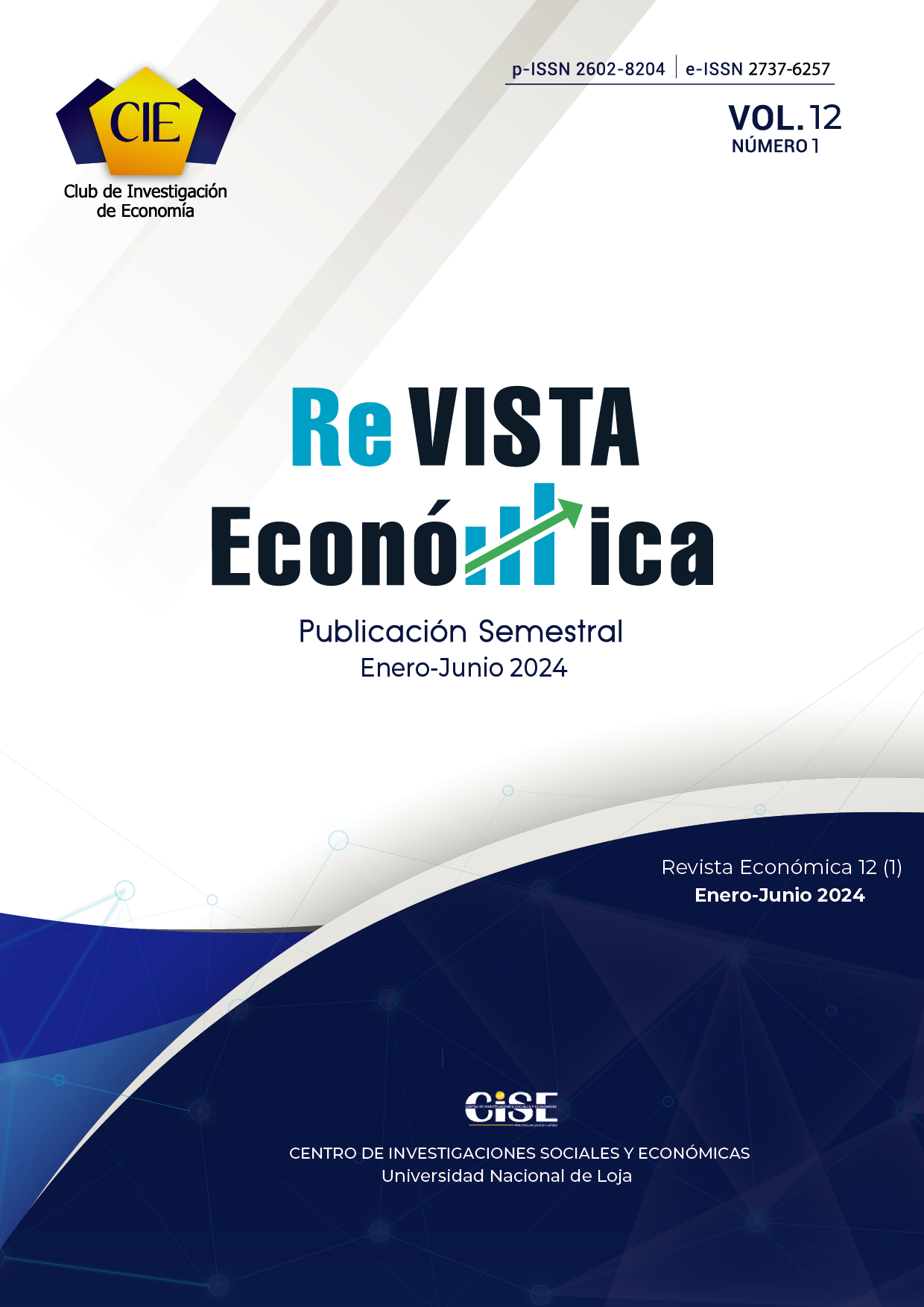Vegetation cover, human capital and economic growth: Empirical evidence at the global level and groups of countries using panel data from 77 countries in the years 1990-2015.
Main Article Content
Abstract
Article Details

This work is licensed under a Creative Commons Attribution-NonCommercial-NoDerivatives 4.0 International License.
Esta obra está sujeta a la licencia Reconocimiento-NoComercial-SinObraDerivada 4.0 Internacional de Creative
Commons. Para ver una copia de esta licencia, visite http://creativecommons.org/licenses/by-nc-nd/4.0/.
References
Tritsch, I., & Arvor, D. (2016). Land Use Policy Transition in environmental governance in the Brazilian Amazon : emergence of a new pattern of socio-economic development and deforestation. Land Use Policy, 59, 446–455.
Hogarth, J. R. (2016). Brazil : No-till agriculture, reduced deforestation and ethanol. Environmental Innovation and Societal Transitions, 1–12.
Sabadini, T., Paulo, E., & Horridge, J. M. (2017). Land Use Policy Controlling deforestation in the Brazilian Amazon : Regional economic impacts and land-use change. Land Use Policy, 64, 327–341.
Obydenkova, A., Nazarov, Z., & Salahodjaev, R. (2016). The process of deforestation in weak democracies and the role of Intelligence. Environmental Research, 148,
Köthke, M., Leischner, B., & Elsasser, P. (2013). Forest Policy and Economics Uniform global deforestation patterns — an empirical analysis. Forest Policy and Economics, 28, 23–37.
Leblois, A., Damette, O., Wolfersberger, J., & Umr, B. (2016). What has Driven Deforestation in Developing Countries Since the 2000s ? Evidence from New Remote-Sensing Data. World Development, xx.
Tanner, A. M., & Johnston, A. L. (2017). The Impact of Rural Electric Access on Deforestation Rates. World Development, xx.
Müller, H., Ru, P., Grif, P., Barros, L. De, Hissa, V., & Hostert, P. (2016). Remote Sensing of Environment Beyond deforestation : Differences in long-term regrowth dynamics across land use regimes in southern Amazonia, 186, 652–662.
Pailler, S. (2018). Re-election incentives and deforestation cycles in the Brazilian Amazon *. Journal of Environmental Economics and Management, 88, 345–365.
Rodrigues, W., & Nunes, A. (2016). Relationship between openness to trade and deforestation : Empirical evidence from the Brazilian Amazon. Ecological Economics, 121, 85–97.
Wehkamp, J., Koch, N., Lübbers, S., & Fuss, S. (2018). Governance and deforestation — a meta-analysis in economics. Ecological Economics, 144(December 2016), 214–227.
Zambrano-monserrate, M. A., Carvajal-lara, C., Urgilés-sanchez, R., & Ruano, M. A. (2018). Deforestation as an indicator of environmental degradation : Analysis of fi ve European countries, 90(January), 1–8.
Gutiérrez, M. F., & Rodríguez-tapia, G. (2016). Análisis jerárquico de la intensidad de cambio de cobertura / uso de suelo y deforestación (2000-2008) en la Reserva de la Biosfera Sierra de Manantlán, México Hierarchical analysis of the intensity of change of land use / cover change and deforestation (2000-2008) in the Sierra de Manantlán Biosphere Reserve, Mexico. Investigaciones Geográficas: Boletín Del Instituto de Geografía, 2016(90), 89–104.
Nené-preciado, A. J., Sansón, G. G., Eduardo, M., Asís, F. De, & Bátiz, S. (2017). Cambio de cobertura y uso de suelo en cuencas tropicales costeras del Pacífico central mexicano Land cover and land use change in coastal basins from the Central Pacific coast of Mexico. Investigaciones Geográficas: Boletín Del Instituto de Geografía, 2017(94), 64–81.

